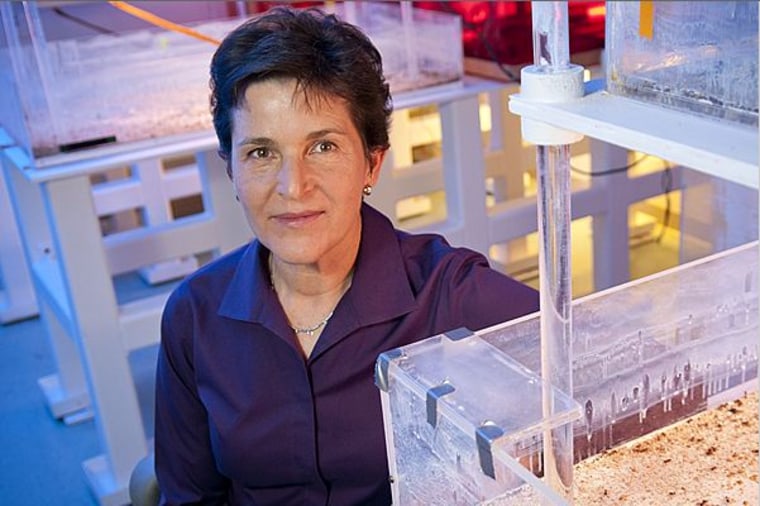
Ants get stuff done without anyone in control. Understanding how they do what they do could help us design more robust and efficient networks, according to a biologist who studies ant colony behavior.
A recent study shows that harvester ants, for example, regulate how many ants are out searching for food in a way that resembles how Internet protocols regulate the amount of data being transferred according to the amount of available bandwidth.
The protocol, called the Transmission Control Protocol, sends out packets of data and waits until it receives an acknowledgement that the packet was received before sending out more packets.
An acknowledgement that comes back slower than the data was sent is a sign of traffic congestion, so the data source scales back its rate of data transmission. If the acknowledgment comes back faster than it was sent, the reverse is true and the data transfer speed is increased.
Harvester ants behave the same way when searching for food. The rate at which foragers leave the nest to look for seeds corresponds to the rate at which ants return and thus to food availability, according to Deborah Gordon, a biologist at Stanford University in California.
Individual ants try not to return to the nest empty-handed. When seeds are plentiful, the foragers return quickly, meaning more ants will leave the nest to find food. If they return slowly, the system is throttled down.
Gordon’s colleague, Balaji Prabhakar, a professor of computer science at Stanford, made the connection between the ant behavior and the way the Internet protocol works. They published their findings on the so-called "anternet" in the Aug. 23 issue of PLoS Computational Biology.
In this case, humans designed an algorithm to solve a traffic congestion problem on the Internet before they found the solution in an ant colony.
If we study the ants first, “we are likely to learn about some new solutions to large-scale network problems,” Gordon told me Monday.
This may be particularly true, she said, as the Internet becomes larger and unwieldy and expensive to operate as more and more data is moved to the cloud.
“We already know that ants are good at a particular kind of problem that we are trying to solve,” she said. “That is, how to operate systems with lots of information and moving around complicated pathways and no central control.”
One solution to operating more complex networks may be the introduction of randomness into the system, as ant colonies do.
“It will still work well enough and it’s a lot cheaper and more effective than trying to [specify everything centrally], so you can actually use less information to get the same result,” she explained in a follow up email.
Doing that means accepting that a certain level of randomness is helpful to the functioning of a system, not damaging.
“That’s what the ants can teach us. They have ways of [organizing networks] that use more randomness and more redundancy,” Gordon said.
John Roach is a contributing writer for NBC News Digital. To learn more about him, check out his website. For more of our Future of Technology series, watch the featured video below.